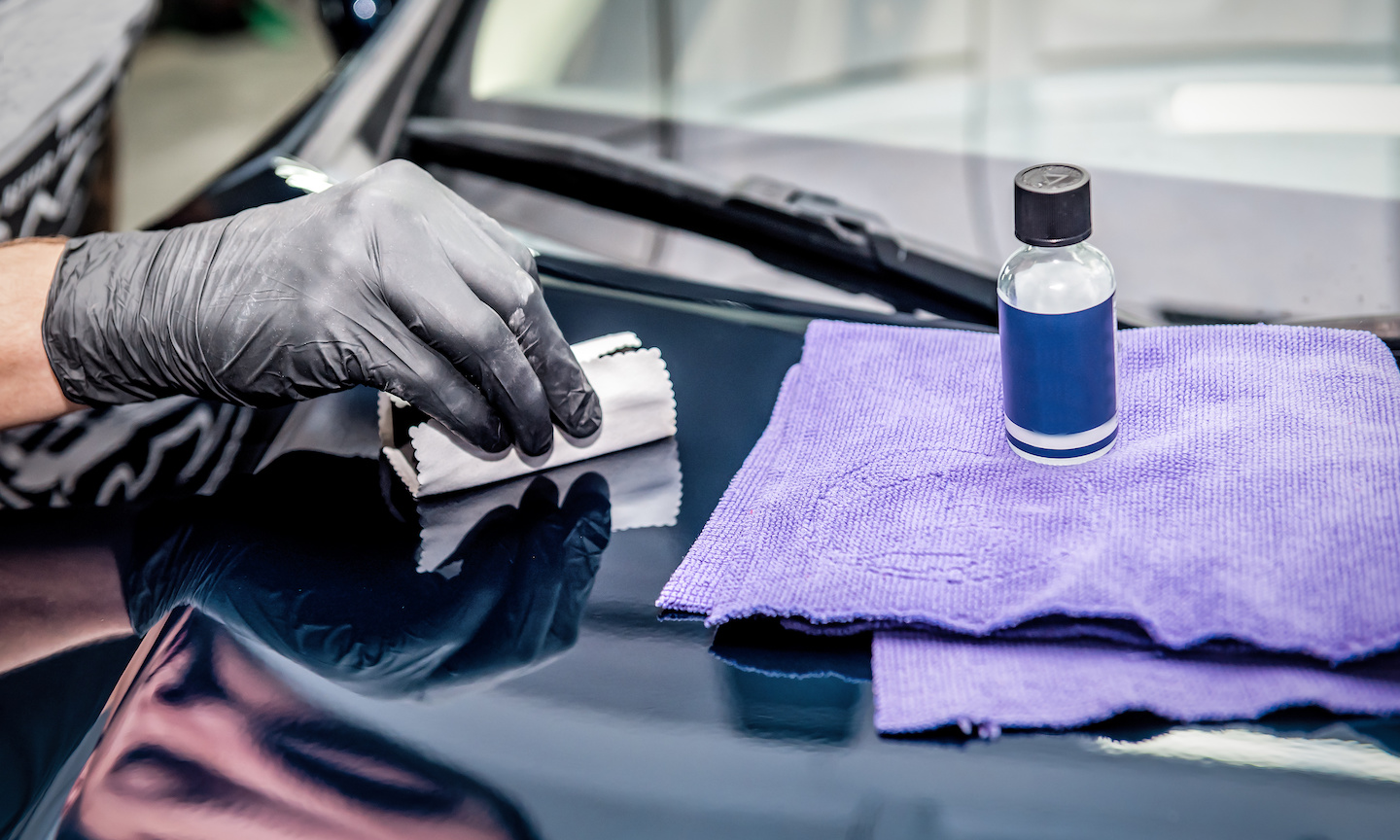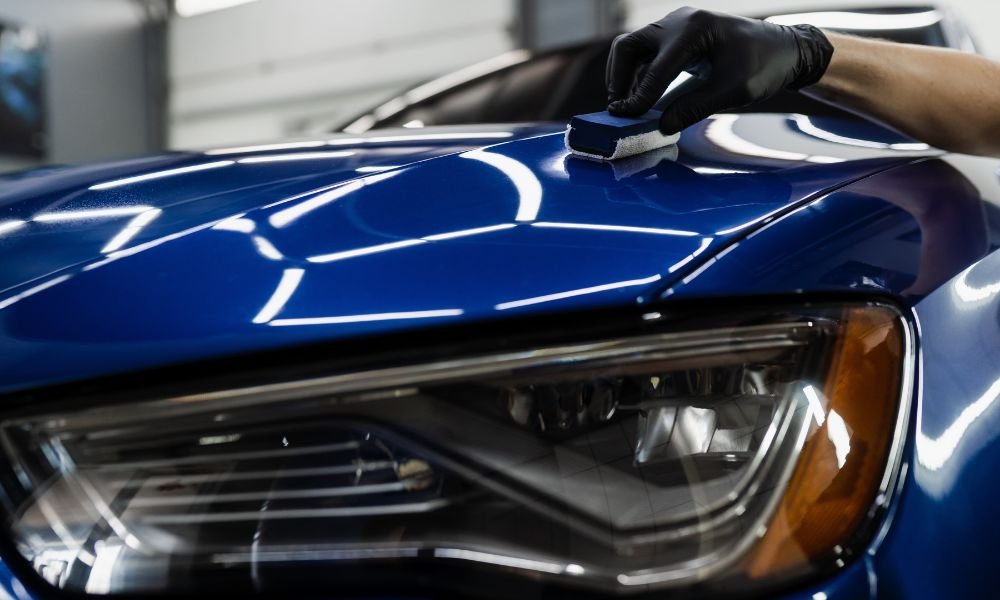Achieve a Showroom Finish with Conforti Auto and Marine Detailing Ceramic Coating
Achieve a Showroom Finish with Conforti Auto and Marine Detailing Ceramic Coating
Blog Article
Exactly How Outlining Porcelain Coating Boosts the Durability of Your Automobile's Paint
Ceramic layer has arised as a critical modern technology in auto describing, offering a durable option for protecting the integrity of your automobile's paint. Recognizing the complexities of just how ceramic covering works and its advantages over conventional wax can offer important insights for car owners.
What Is Ceramic Finishing?
Comprehending the safety advantages of ceramic finishing begins with recognizing its composition and capability. Ceramic covering is a fluid polymer applied to the external surface areas of vehicles, largely designed to boost and shield automotive paint (Conforti Auto and Marine Detailing Ceramic Coating).
The covering's application includes thorough prep work of the lorry's surface, which should be without contaminants, scrapes, and blemishes to ensure optimal bond. Once used, the ceramic finish remedies to create a rigid shield that can withstand different environmental variables, consisting of UV rays, chemical discolorations, and oxidation.
Furthermore, ceramic layers are not just surface-level treatments; they penetrate the paint to offer a lasting protection. This functionality extends the lifespan of the car's appearances while maintaining its worth gradually. Understanding these fundamental elements of ceramic finish is important for vehicle owners looking for efficient solutions for paint conservation and improvement.
Benefits of Ceramic Finish
The advantages of ceramic covering prolong far beyond its basic safety features - Conforti Auto and Marine Detailing Ceramic Coating. One of the most substantial benefits is its capability to give outstanding durability. Unlike typical wax or sealers, ceramic coverings develop a solid bond with the automobile's paint, allowing it to hold up against environmental threats such as UV rays, acid rainfall, and road salt. This resilience dramatically minimizes the risk of paint damages, maintaining the car's aesthetic allure.
Additionally, ceramic layers supply hydrophobic buildings, implying they fend off water and contaminants. This characteristic not only makes the automobile simpler to clean yet additionally reduces the regularity of cleaning, saving both effort and time for vehicle proprietors. The slick surface area created by the finishing stops dirt and grime from adhering, enhancing the auto's overall sanitation.
Furthermore, ceramic finishings enhance the depth and clarity of the paint, giving vehicles a glossy coating that is visually striking. This aesthetic improvement better adds to preserving the auto's resale worth, as a well-kept outside is a significant selling factor for prospective customers. On the whole, the advantages of ceramic layer make it a rewarding investment for anybody seeking to safeguard and boost their vehicle's paintwork.
Exactly How Ceramic Layer Functions

The layer's hydrophobic properties fend off water and dirt, protecting against the buildup of crud on the surface view it area. This not only makes the automobile easier to clean yet also reduces the likelihood of scratches and swirl marks caused by traditional cleaning methods. The ceramic layer acts as a shield against UV rays, which can cause fading and oxidation over time.
As soon as healed, the finishing exhibits amazing resistance to chemicals, including roadway salts, bird droppings, and tree sap, which can or else damage the paint. The longevity of ceramic coatings can last for several years, depending on aspects such as maintenance and environmental conditions. In general, the chemical bonding procedure of ceramic finishes gives a robust protection that maintains the stability and look of a car's paintwork.
Comparing Ceramic Finishing to Wax
Contrasting ceramic finish to conventional check out this site wax reveals significant distinctions in performance and longevity. While both products aim to safeguard a car's paint, their compositions and toughness set them apart. Wax, usually made from natural carnauba or synthetic materials, provides a momentary shield that normally lasts just a few weeks to a couple of months, relying on ecological conditions and maintenance regimens.
On the other hand, ceramic finishes blog are advanced solutions made up of not natural materials that bond chemically with the automobile's paint. This creates a robust, semi-permanent layer of protection that can endure for a number of years. Therefore, ceramic finishes provide superior resistance to UV rays, chemical stains, and physical abrasion, significantly lowering the danger of oxidation and fading.
Moreover, the hydrophobic residential properties of ceramic layers guarantee that water grains up and rolls off the surface area, making it extra difficult for dust and grime to stick. This convenience of cleansing is a significant benefit over wax, which can draw in dirt and need regular reapplication. Ultimately, for car owners looking for resilient security and improved visual appeal, ceramic finishings offer a more efficient option to typical wax products.
Upkeep Tips for Longevity
Proper upkeep is important for making the most of the longevity of a ceramic covering. Use a pH-balanced cars and truck hair shampoo to protect against breaking down the coating, and avoid automated vehicle washes with rough brushes that can trigger micro-scratches.
To preserve the hydrophobic residential properties of the ceramic finish, think about using a maintenance spray or booster particularly created for ceramic coverings every few months. This will certainly enhance the safety layer and improve water beading.
Additionally, prevent subjecting the covered surface area to extreme environmental problems whenever possible. Auto parking in shaded locations or making use of a cars and truck cover can prevent UV damage and contamination from bird droppings, tree sap, or industrial fallout.
Finally, evaluate the layer periodically for signs of wear or damage. If you observe a reduction in hydrophobic actions, it might be time for a professional reapplication. By adhering to these maintenance pointers, vehicle owners can dramatically expand the life and effectiveness of their ceramic covering, guaranteeing that their automobile's paint continues to be safeguarded and visually appealing for several years ahead.
Conclusion

Report this page